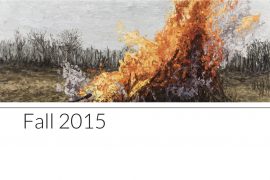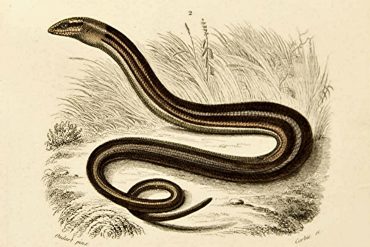How can people maintain their faith when the world is increasingly secular and known through science? That is the central question Roger Haight seeks to answer in Faith and Evolution. While Haight claims to be writing for “Christians who are affected by a scientific culture” (ix), this book’s deep, mathematical approach toward theology is less of a subway read than it is a text for meditation and contemplation. Haight does not address specific current events, but ideas of diversity, intercultural communication, and tolerance shape his discussion and his ideas about the ability of religion to respond to cultural change and scientific discovery. Haight imagines what both science and religion offer to the world and to humanity, and he does not see antagonism or conflict between the two. Rather, he explores the benefits of seeing them as allies.
From first page to last, Haight builds his argument logically and incrementally, making several bold claims. First, that God exists, in some sense, because of an individual’s belief. Second, that there is no place for the idea of “original sin” in a world understood through science. Third, that thinking of Jesus as a human being formed from the same processes as every other human being does not diminish his power—or his divinity. Haight uses the central idea of evolution to lay the foundation for his claims. We know evolution happened and is still happening. Therefore, Christian beliefs must accommodate that knowledge. As a reader coming from more of a science background than a religion background, I appreciated Haight’s nearly scientific method of taking ideas apart and putting the pieces together in a manner not unlike a mathematical proof or theorem. This is not a book that employs sensationalism or emotional manipulation in any way to make its points.
Haight is a theologian interested in language, and, like the lexicographer Samuel Johnson, he is descriptive rather than prescriptive in his approach. As part of his argument, he sets out to define the Spirit of God, turning to Aquinas, Augustine, Luther, Calvin, and the bible. “The quest for the meaning of the Spirit of God must begin with the metaphor itself,” Haight writes (90). “The word for spirit in Hebrew is ruah, and it was rendered as pneuma in Greek. The same word referred to the wind and to the breath of a living being.” He notes a great deal of flexibility in how “Spirit language” appears in the New Testament, indicating that, even in the most authoritative source, the meaning of the Spirit of God is both precise and expansive. Haight circles back to evolution and a scientific worldview, coming up with a highly naturalistic definition of the Spirit of God—and also a highly personal one. God is natural forces, but also something unseen within the believer. In essence, when you believe in God, God exists within you.
Haight also notes that we cannot think of God as an interventionist. The world operates according to natural laws and processes that are predictable, reproducible, and able to be witnessed and recorded. In other words, God does not bring rain, though God may have created the processes that cause rain. This premise sets up the if/then circumstances of one of Haight’s primary claims: If God doesn’t intervene in human events, God also did not punish humans for original sin. Therefore, “the term original sin should be erased from the Christian vocabulary” (140). Sin is a construct of human culture, Haight says, but “the fact that sin can be described coherently within a framework of evolution does not lessen its power and/or the need of grace for salvation” (141). Haight repeatedly makes this assertion: explaining the divine through science and logic in no way diminishes the power of religious ideas—or the need for them.
“Can a person who accepts the description of reality that science offers also embrace the Jesus Christ of Christian faith?” Haight wonders (143). Again, Haight uses language to arrive at an understanding of Jesus, performing a close reading of the gospels. He calls for attention to the historical figure of Jesus and to the cultural context that may have affected how Jesus’s life and actions were depicted, recorded, and interpreted. Haight acknowledges that there are many interpretations of Jesus, all of which may have some truth to them, but unless God actively intervenes in the course of history, Jesus cannot be an incarnation of God. Haight points out that we cannot impose upon other faith traditions the belief that Jesus is the exclusive savior of humanity. If Jesus is human like the rest of us, if he is part of the natural processes of the universe, Haight argues, then he is more relevant. In Romans, Paul emphasizes the meaningfulness of Jesus and his teachings. Haight builds on Paul’s interpretation, noting that the Council of Chalcedon described Jesus as having two natures, human and divine, but one person with two natures “says nothing more than what experience of salvation tells us: God’s Presence was shown or manifested to us in the person and ministry of Jesus” (190), just as it might be shown in a blade of grass or a bird.
Underlying Haight’s discussion on every level is the idea that language shapes how we think and what we believe. How we use language has important implications for how we interact with those who are different from us, whether that interaction is through a text or out in the world. In fact, Haight brings the idea of public discourse not only into his examination of Jesus, but also to his examination of science. Copernicus, he writes, “had to measure his growing scientific convictions against the public culture of faith in which he lived” (37), as did Galileo and Darwin. “How did they understand the nature of faith knowledge that allowed them to live in contradiction of its public form?” (38). Haight’s question is not only about history but about culture. How does new knowledge expand the world and challenge what people have believed for so long? Haight looks at the conditions of scientific discovery in the same way that he looks at the conditions of the formation of Jesus, bringing up the social context in which scientific advances were made—just as he brought up the social context in which foundational ideas of Jesus were formed.
“We do not usually think of mathematical equations as narratives,” he writes, “but the formula of the DNA molecule tells the story of life. The mathematization represents human construction, but it tells the stories of elements interacting in extremely complex patterns of amazing symmetry” (35). This description could apply equally to religion and its narratives, and, in fact, Haight’s reasoning and interpretations of the Spirit of God, original sin, and Jesus are exactly this: elements interacting in extremely complex patterns of amazing symmetry. The difference between science and religion, Haight points out, is that science can be understood across cultures, languages, and belief systems. If a drug saves lives, it need not communicate more than that. “This makes science a powerful instrument for helping to unify the human race,” Haight writes. “Theology and religion might bear this in mind” (36–37). At the core of Haight’s claims is the idea that religion must be responsive to the world as it exists now. That does not necessarily mean sacrificing belief, but rather accommodating change.
If ideas of God, Jesus, and sin must change in response to scientific knowledge, what is the value of faith? Haight mentions how theology might learn from the language of science, and—briefly—discusses the way religion can provide an ethical framework for science, such as the call to preserve the planet, but I believe many of the ideas he brings up in this book are important to science. Just as the facts of evolution do not lessen the power of God or Jesus for those who believe, the presence of spirituality or faith does not lessen the power of science, and may in fact increase it. Haight speaks often of transcendence. He means something different from what Thoreau and other transcendentalists meant when they used the word, but I can’t help thinking of Thoreau’s famous quotation: Heaven is under our feet as well as over our heads. Both science and faith are ways of seeing, knowing, and understanding. Haight’s careful readings show that they are not irreconcilable. Faith may have given Darwin, Galileo, and Copernicus inner conflict, but it was also almost certainly the impetus for their investigations and their questions; in other words, their science may not have existed without their faith.





